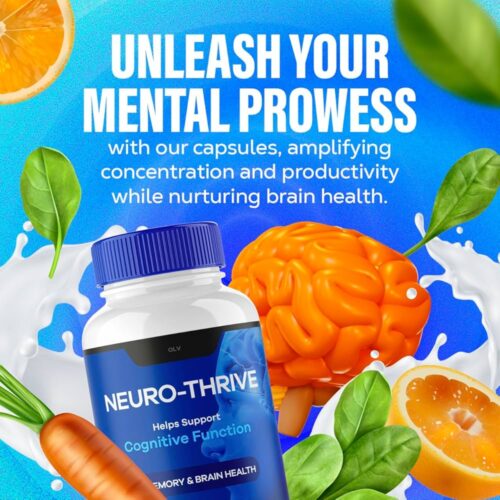Welcome to our comprehensive guide on anti-aging fitness, specifically designed for men over 40 who are committed to achieving optimal health and vitality. In this section, we will explore the importance of a science-based approach to fitness that addresses both physical and mental well-being. Exercise, as we will discuss, is more than just a routine—it’s a powerful tool for enhancing longevity and quality of life.
Regular physical activity has been shown to reduce the risk of chronic age-related diseases, such as cardiovascular disease and obesity. This approach to health is often referred to as the “polypill” of modern medicine, offering multiple benefits with minimal side effects. By incorporating science-backed strategies into your daily routine, you can take control of your health and maintain a vibrant, active lifestyle well into your golden years.
Dr. John Spencer Ellis, a renowned expert in the field of fitness and health, emphasizes the importance of personalized coaching. Through his program at dietguru.com, John provides tailored guidance to help men achieve their health goals and maintain peak physical condition.
Key Takeaways
- A comprehensive guide to anti-aging fitness for men over 40
- Exercise as a science-based approach to overall well-being
- Regular physical activity reduces the risk of chronic diseases
- Personalized coaching with Dr. John Spencer Ellis at dietguru.com
- Exercise as a “polypill” for longevity and quality of life
Introduction to Anti-Aging Fitness
For men over 40, maintaining vitality and health becomes a top priority. This is where anti-aging fitness comes into play, offering a holistic approach to combat the effects of aging.
Physical fitness, particularly muscle strength, plays a crucial role in overall well-being. Regular training not only helps build muscle but also supports longevity and mental health.
Modern research underscores the effectiveness of specific exercise protocols in optimizing health. Combining endurance and strength training can enhance cardiovascular health and increase muscle mass, which naturally declines with age.
- Combining endurance and strength training boosts cardiovascular health and muscle mass.
- Expert coaching, such as that offered by Dr. John Spencer Ellis at dietguru.com, provides personalized guidance for effective fitness regimens.
- Regular physical activity reduces the risk of chronic diseases like heart disease and diabetes.
Starting a fitness journey can be daunting, but with the right resources, men can achieve their health goals and maintain an active lifestyle.
Understanding the Science of Anti-Aging Fitness
Exploring the science behind anti-aging fitness reveals how physical activity influences our bodies as we age. By examining cutting-edge research, we can uncover the mechanisms that delay aging effects and enhance longevity.
Research on Physical Fitness and Longevity
Studies consistently show that regular physical activity is a powerful tool for promoting longevity. One key metric is VO2max, the maximum rate of oxygen consumption during intense exercise, which is a strong predictor of survival. Higher VO2max levels are associated with lower mortality rates, emphasizing the importance of cardiovascular health.
- VO2max is a critical indicator of cardiovascular fitness and longevity.
- Regular activity helps maintain muscle function and strength, which naturally decline with age.
Key Findings in Exercise Physiology
Exercise physiology research highlights several important benefits of physical activity. Strength training, for instance, not only builds muscle but also improves bone density and metabolic health. Additionally, studies have shown that both aerobic and resistance training can enhance skin elasticity and dermal structure, further combating the visible signs of aging.
- Strength training supports muscle hypertrophy and overall muscle health.
- Aerobic exercise improves cardiovascular function and oxygen utilization.
- Combined training protocols maximize benefits for both strength and endurance.
Understanding these scientific findings empowers us to create effective training regimens tailored to individual needs, helping men over 40 maintain strength, activity levels, and overall health as they age.
The Role of Exercise in Slowing the Aging Process
Exercise plays a vital role in maintaining health and overall well-being, especially as we age. Regular physical activity not only enhances physical health but also contributes to mental and emotional well-being.
Benefits of Regular Physical Activity
Research indicates that consistent exercise leads to better heart health and improved circulation. Studies have shown that regular activity reduces the risk of chronic diseases, such as heart disease and diabetes, while enhancing overall body function.
- Improved immune system response and reduced inflammation are additional benefits of regular exercise.
- Physical activity has been shown to slow cellular aging, according to research data.
These findings set the stage for practical strategies to incorporate activity into daily routines, promoting long-term health and vitality.
How Dr. John Spencer Ellis Keeps Men in Shape
Dr. John Spencer Ellis has developed a unique approach to helping men maintain peak physical condition, particularly as they age. His methods, available through dietguru.com, blend scientific research with practical, personalized coaching.
Coaching Insights from dietguru.com
Dr. Ellis’s programs are tailored to address the specific needs of men over 40, focusing on sustainable health and vitality. His approach combines strength training with aerobic exercises, creating a balanced regimen that supports overall well-being.
- Studies highlight the effectiveness of personalized strength training in improving muscle mass and function.
- Dr. Ellis’s coaching emphasizes the importance of resistance exercises to combat natural muscle decline.
- His programs incorporate both aerobic and strength training to maximize health benefits.
- Expert guidance from dietguru.com ensures workouts are tailored to individual needs and goals.
By following Dr. Ellis’s expert advice, men can achieve and maintain a strong, healthy body, enhancing their quality of life as they age.
Components of Physical Fitness for Anti-Aging
Physical fitness is a cornerstone of anti-aging, encompassing several key components that work together to promote health and longevity. Understanding these elements is essential for creating an effective fitness regimen.
Assessing Aerobic Capacity and Endurance
Aerobic capacity, measured by VO2max, is a critical indicator of cardiovascular health. Higher VO2max levels are linked to lower mortality rates and better overall longevity. Regular aerobic exercises, such as jogging or cycling, can improve oxygen consumption, enhancing endurance and reducing the risk of chronic diseases.
Building Muscular Strength and Mass
Muscular strength is vital for maintaining physical function as we age. Strength training, including weight lifting, helps build muscle mass and bone density, reducing the risk of falls and fractures. Research shows that even moderate resistance training can significantly improve muscle function and overall health.
| Component | Benefits | Recommendations |
|---|---|---|
| Aerobic Training | Improves cardiovascular health, increases longevity | 150 minutes/week of moderate-intensity exercise |
| Strength Training | Builds muscle mass, enhances bone density | 3 sessions/week, 3 sets of 10-12 reps |
Incorporating both aerobic and strength training into your routine can lead to a more active and vibrant life, reducing the risk of age-related health issues and improving overall well-being.
Personalized Fitness Assessments and Training Programs
Creating an effective fitness plan begins with understanding your current health and fitness level. Personalized assessments are key to designing programs that meet individual needs and goals.
Evaluating Fitness Levels
Assessments often include clinical and functional tests to measure strength, flexibility, and cardiovascular health. These evaluations guide the creation of targeted exercise plans.
Designing Tailored Exercise Regimens
Using assessment data, experts craft regimens that focus on specific areas, such as resistance training to build muscle or aerobic exercises to improve heart health. This approach ensures each workout is both effective and safe.
Research shows personalized programs lead to better long-term adherence and outcomes. Each year of consistent training can significantly reduce the risk of chronic diseases, promoting overall health and longevity.
Implementing Resistance and Strength Training
Resistance and strength training are cornerstone elements in any effective fitness regimen, especially for men over 40. These exercises not only build muscle but also support overall health and longevity. By incorporating these methods, individuals can maintain physical function and reduce the risk of chronic diseases.
Progressive Load Techniques
Progressive load techniques involve gradually increasing the weight or resistance used in workouts. This approach is essential for stimulating muscle growth and improving strength over time. According to clinical studies and ACSM guidelines, progressive loading is a safe and effective method for older men to enhance their training outcomes.
- Gradual Increase in Resistance: Start with manageable weights and gradually increase the load as strength improves. This method prevents plateaus and ensures continuous progress.
- Short yet Effective Sessions: Even brief training sessions, measured in minutes, can yield significant benefits. Consistency is key to achieving and maintaining muscle mass.
- Group Training Benefits: Participating in group sessions can provide motivation and social support. Exercising with others often leads to better adherence and more enjoyable workouts.
For example, a study on middle-aged men demonstrated that progressive resistance training led to improved skin elasticity and dermal thickness. These findings highlight the holistic benefits of such exercises beyond mere muscle building.
By following these guidelines and incorporating progressive load techniques, men can safely and effectively enhance their strength and overall health. Remember, even short, focused sessions can make a significant difference in maintaining vitality and independence as you age.
Incorporating Aerobic Exercise into Daily Routine
Aerobic exercise is a cornerstone of heart health, especially for adults over 40. Regular aerobic activity not only strengthens the cardiovascular system but also enhances overall endurance, making it easier to tackle daily tasks.
Low-Impact and Cardiovascular Workouts
Engaging in low-impact aerobic exercises is an excellent way for older adults to improve heart health without excessive strain. Activities like brisk walking, swimming, or cycling are ideal because they are easy on the joints and can be done almost anywhere.
| Exercise Type | Benefits | Recommendations |
|---|---|---|
| Brisk Walking | Improves cardiovascular health, increases endurance | 30 minutes, 5 days a week |
| Swimming | Enhances heart function, low-impact on joints | 20-30 minutes, 3-4 times a week |
| Cycling | Boosts heart rate, strengthens legs | 20-30 minutes, 3-4 times a week |
Research consistently shows that regular aerobic exercise improves oxygen uptake and cardiac efficiency, leading to a healthier heart. For adults, finding activities that fit their lifestyle is key to maintaining consistency. Whether it’s a morning walk or an evening swim, the goal is to make aerobic exercise a enjoyable part of daily life.
Epigenetic Rejuvenation Through Exercise
Recent advancements in science have unlocked the potential of exercise to influence our genes, revealing a powerful way to combat aging at the molecular level. This process, known as epigenetic rejuvenation, shows how physical activity can reprogram our cells to function more like those of a younger person.
Molecular Benefits of Physical Activity
Epigenetics, the study of changes in gene expression without altering the DNA sequence, plays a crucial role in how our bodies age. Key mechanisms include DNA methylation and histone modifications, which can be influenced by lifestyle factors like exercise.
- Exercise induces changes in DNA methylation, particularly in genes related to muscle function and metabolism.
- Physical activity increases levels of certain transcription factors, such as PGC-1α, which promote mitochondrial biogenesis and energy production.
- Studies show that these molecular changes can lead to improved muscle function and recovery, even in older adults.
For older adults, these changes are particularly significant. By promoting a more youthful gene expression profile, exercise helps maintain muscle mass, reduce inflammation, and enhance overall vitality. This scientific evidence underscores the importance of regular physical activity in supporting long-term health and well-being.
Integrating Lifestyle Changes with Fitness Routines
Achieving optimal health involves more than just exercise; it requires a holistic approach that includes nutrition, recovery, and mental well-being. While physical activity is essential, it’s only one piece of the puzzle.
Nutrition and Recovery Strategies
Proper nutrition plays a vital role in enhancing workout effectiveness and preserving muscle mass. A balanced diet rich in protein, healthy fats, and complex carbohydrates provides the body with the necessary fuel for optimal performance. Pairing this with adequate rest and recovery protocols, such as stretching and foam rolling, ensures muscles repair and grow stronger. Even small, consistent changes in your daily routine can lead to noticeable improvements over the course of a week.
Stress Management and Sleep Quality
Chronic stress and poor sleep can undermine even the most rigorous fitness regimens. Incorporating stress management techniques like meditation or deep breathing can help maintain hormonal balance and reduce muscle loss. Prioritizing 7-9 hours of quality sleep each night is equally important, as it supports recovery and overall well-being. By addressing these factors, you create an environment where your body can thrive.

Remember, true health is a journey, not a destination. By integrating nutrition, recovery, stress management, and sleep into your lifestyle, you’ll see measurable progress—not just in a day, but over weeks and months. Embrace a holistic approach to wellness and unlock your full potential.
Overcoming Age-Related Barriers to Fitness
For many men over 40, starting or maintaining a fitness routine can feel daunting due to age-related challenges. Decreased mobility, joint discomfort, and busy schedules are common obstacles. However, with the right strategies, these barriers can be effectively addressed.
One major hurdle is joint discomfort, which can make certain exercises uncomfortable or even painful. To overcome this, consider low-impact activities like swimming or cycling, which are gentle on the joints while still providing a great workout. These exercises not only improve cardiovascular health but also help build power and endurance without excessive strain.
- Adapt exercises to suit your current fitness level and abilities.
- Focus on incremental progress to build power and endurance gradually.
- Invest time in activities that promote both physical and mental well-being.
Another common challenge is finding the time to exercise. Even short, focused sessions can make a significant difference. For example, a 20-minute strength training session can enhance muscle function and overall health. Consistency is key, and even small increments of time dedicated to physical activity can lead to measurable improvements.
Research shows that personalized coaching, such as the programs offered by Dr. John Spencer Ellis at dietguru.com, can provide tailored guidance to overcome these barriers. These programs emphasize the importance of adapting exercises to individual limitations, ensuring that each workout is both effective and safe.
By addressing these challenges head-on and investing time in targeted interventions, men over 40 can build power, enhance their physical function, and enjoy a more active, vibrant life. Remember, every step forward, no matter how small, contributes to long-term health and vitality.
Training Frequency, Intensity, and Duration Tips
Understanding the right balance of training frequency, intensity, and duration is crucial for maximizing the benefits of your workout routine, especially as you age. ACSM standards provide a clear framework to help you optimize your exercise regimen.
Guidelines Based on ACSM Standards
The American College of Sports Medicine (ACSM) offers evidence-based guidelines to help you structure your workouts effectively. For aerobic exercises, the ACSM recommends at least 150 minutes of moderate-intensity exercise per week. This can be broken down into 30 minutes, five days a week. For strength training, 3 sessions per week with 3 sets of 10-12 repetitions each are ideal.
When it comes to intensity, the ACSM suggests working at 65-75% of your maximum heart rate for aerobic exercises. This not only improves cardiovascular health but also enhances oxygen utilization, which is vital for overall fitness. For resistance training, focus on gradual progression to safely increase intensity over time, ensuring continuous muscle growth without risking injury.
Distributing your workouts evenly throughout the week can lead to improved oxygen utilization and a consistent reduction in health risks. This balanced approach ensures that your body adapts positively to the demands of exercise, leading to better overall results and sustained vitality.
By following these guidelines, you can create a structured and effective workout plan that aligns with your health goals. For more personalized advice, consider consulting with experts like those at dietguru.com, who specialize in tailored fitness programs for men over 40.
Safety Considerations and Injury Prevention for Older Adults
As men age, maintaining an active lifestyle is crucial, but safety becomes a top priority. Each month, thousands of older adults face injuries that could have been prevented with proper precautions. Ensuring the quality of your exercise routine is as important as the routine itself.
Proper technique and form are essential to avoid injuries. Incorporate warm-ups, cool-downs, and stretching to prepare your body for exercise and aid in recovery. Monitoring the quality of your workouts over time ensures lasting benefits and reduces injury risks.
- Focus on proper technique to prevent muscle strain and joint issues.
- Include warm-ups and stretching to enhance flexibility and prepare muscles.
- Monitor exercise quality to maintain effectiveness and safety.
- Preventing injuries is as critical as achieving strength gains, especially in reducing cancer risks and overall health.
- Follow expert recommendations to ensure a safe workout environment.
By prioritizing these safety measures, older adults can enjoy the benefits of physical activity while minimizing risks. Remember, a safe approach to exercise is key to maintaining health and vitality as you age.
Optimizing Overall Health and Longevity Through Activity
Engaging in regular physical activity is a cornerstone of optimizing overall health and longevity, particularly for men over 40. A well-rounded fitness regimen not only enhances physical ability but also supports mental and emotional well-being.
Scientific research underscores the profound impact of exercise on health markers. Studies show that a balanced approach combining aerobic and strength training can significantly improve cardiovascular health, boost muscle mass, and even enhance skin elasticity. This holistic method addresses multiple aspects of aging, creating a synergistic effect that promotes long-term vitality.
The interplay between exercise, rest, and recovery is crucial. Adequate rest allows the body to repair and rejuvenate, which is essential for maintaining physical function. Research highlights that proper recovery protocols, such as stretching and foam rolling, can enhance the benefits of exercise, leading to better overall health outcomes.
The science behind physical activity reveals its role in cellular repair and rejuvenation. Exercise stimulates the body’s natural repair mechanisms, improving muscle function and reducing inflammation. This process not only supports physical health but also contributes to a better quality of life, enabling men to stay active and independent as they age.
By integrating regular activity into daily routines, men can enjoy a more vibrant and healthy life. Sustained fitness practices, combined with proper rest and recovery, create a powerful foundation for optimizing overall health and longevity.
Implementing anti-aging fitness Strategies
Embracing a holistic approach to health is key for men over 40 seeking to maintain vitality. By integrating aerobic exercise, strength training, and flexibility workouts, individuals can create a balanced regimen that addresses multiple aspects of aging.
Research highlights that combining aerobic exercise with strength routines maximizes benefits. For instance, 150 minutes of moderate-intensity aerobic activity weekly, paired with three strength sessions, can enhance cardiovascular health and muscle mass. This dual approach not only supports physical function but also boosts overall vigor.

Regular assessments are crucial for adapting your routine. As Dr. John Spencer Ellis notes, “A tailored approach ensures workouts remain effective and safe, addressing individual needs and goals.” This personalized method helps in sustaining long-term health benefits.
Exercise also plays a role in improving sexual health and overall vitality. Studies show that regular physical activity can enhance sexual function and confidence, contributing to a better quality of life. By incorporating these strategies into daily routines, men can enjoy lasting results and a more vibrant lifestyle.
Conclusion
In conclusion, embracing a science-driven approach to fitness offers men over 40 a powerful way to enhance their healthspan and quality of life. The strategies outlined in this article highlight how regular workouts, combining aerobic and strength training, can significantly improve cardiovascular health and reduce the risk of chronic diseases. By focusing on consistency, proper technique, and a holistic approach that includes nutrition and recovery, men can achieve long-term success and maintain a vibrant lifestyle.
For those seeking personalized guidance, expert coaching is available through dietguru.com. This resource provides tailored programs designed to address individual needs, ensuring safe and effective workouts. Remember, taking the first step toward a healthier, more vigorous life is within reach. Start your journey today and embrace the transformative power of consistent, science-backed exercise.










